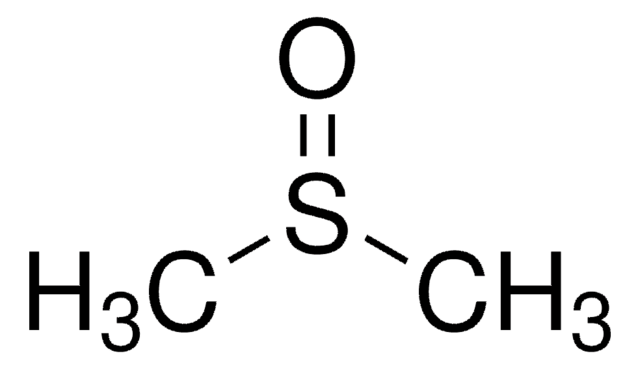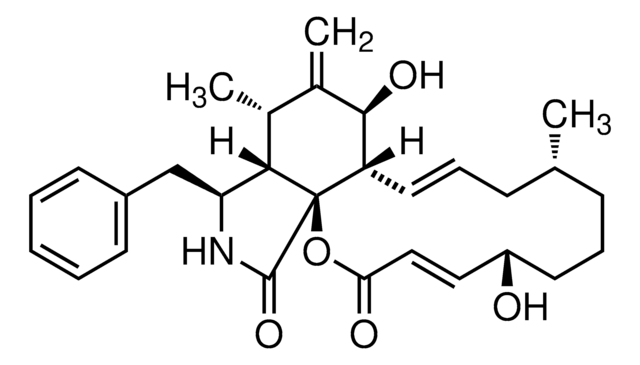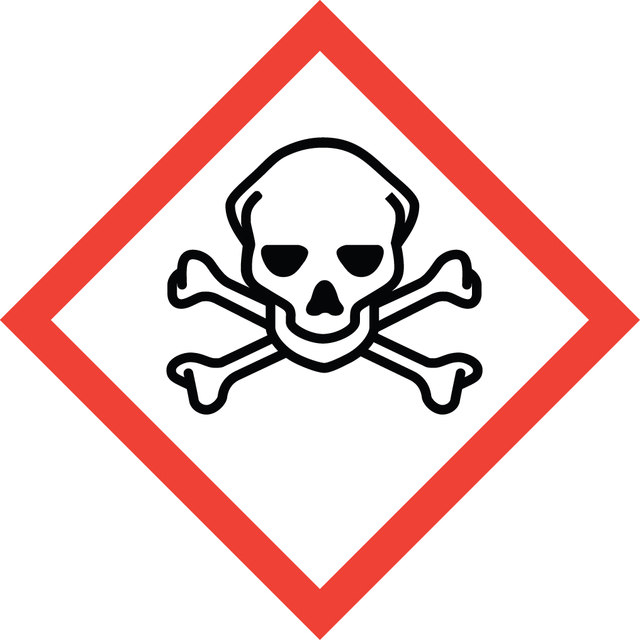About This Item
Recommended Products
form
powder
Quality Level
storage temp.
−20°C
SMILES string
C[C@@H]1CCC[C@@H](O)CCC(=O)O[C@]23[C@@H](\C=C\C1)[C@H](O)C(=C)[C@@H](C)[C@H]2[C@H](Cc4ccccc4)NC3=O
InChI
1S/C29H39NO5/c1-18-9-7-13-22(31)15-16-25(32)35-29-23(14-8-10-18)27(33)20(3)19(2)26(29)24(30-28(29)34)17-21-11-5-4-6-12-21/h4-6,8,11-12,14,18-19,22-24,26-27,31,33H,3,7,9-10,13,15-17H2,1-2H3,(H,30,34)/b14-8+/t18-,19-,22-,23+,24+,26+,27-,29-/m1/s1
InChI key
WIULKAASLBZREV-RXPQEOCGSA-N
Looking for similar products? Visit Product Comparison Guide
1 of 4
This Item | SML3043 | SML3526 | SML3641 |
|---|---|---|---|
| assay ≥98% (HPLC) | assay ≥98% (HPLC) | assay ≥98% (HPLC) | assay ≥95% (HPLC) |
| form powder | form powder | form powder | form powder |
| Quality Level 100 | Quality Level 100 | Quality Level 100 | Quality Level 100 |
| storage temp. -10 to -25°C | storage temp. 2-8°C | storage temp. 2-8°C | storage temp. -10 to -25°C |
| solubility DMSO: 2 mg/mL, clear (Warmed) | solubility DMSO: 2 mg/mL, clear | solubility DMSO: 2 mg/mL, clear | solubility DMSO: 2 mg/mL, clear (Warmed) |
| color white to beige | color white to beige | color white to beige | color white to beige |
Application
Biochem/physiol Actions
signalword
Danger
hcodes
Hazard Classifications
Acute Tox. 2 Dermal - Acute Tox. 2 Inhalation - Acute Tox. 2 Oral - Carc. 2
Storage Class
6.1A - Combustible acute toxic Cat. 1 and 2 / very toxic hazardous materials
wgk_germany
WGK 3
flash_point_f
Not applicable
flash_point_c
Not applicable
ppe
Eyeshields, Faceshields, Gloves, type P2 (EN 143) respirator cartridges
Choose from one of the most recent versions:
Already Own This Product?
Find documentation for the products that you have recently purchased in the Document Library.
Our team of scientists has experience in all areas of research including Life Science, Material Science, Chemical Synthesis, Chromatography, Analytical and many others.
Contact Technical Service










